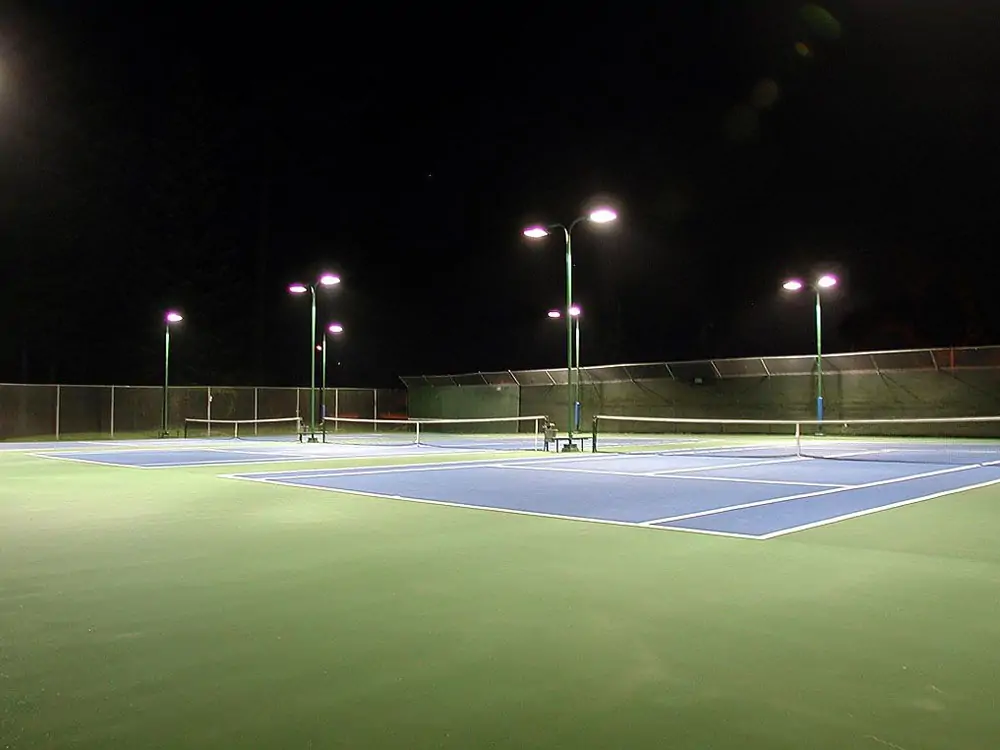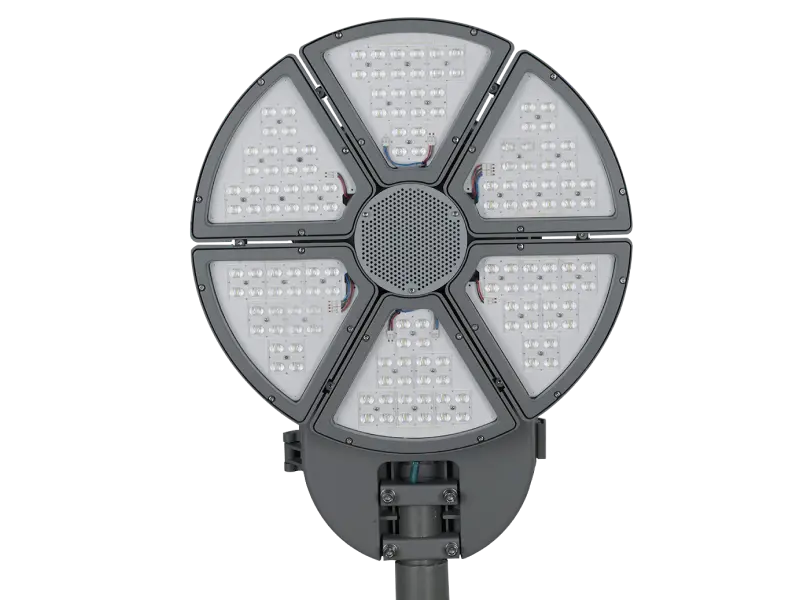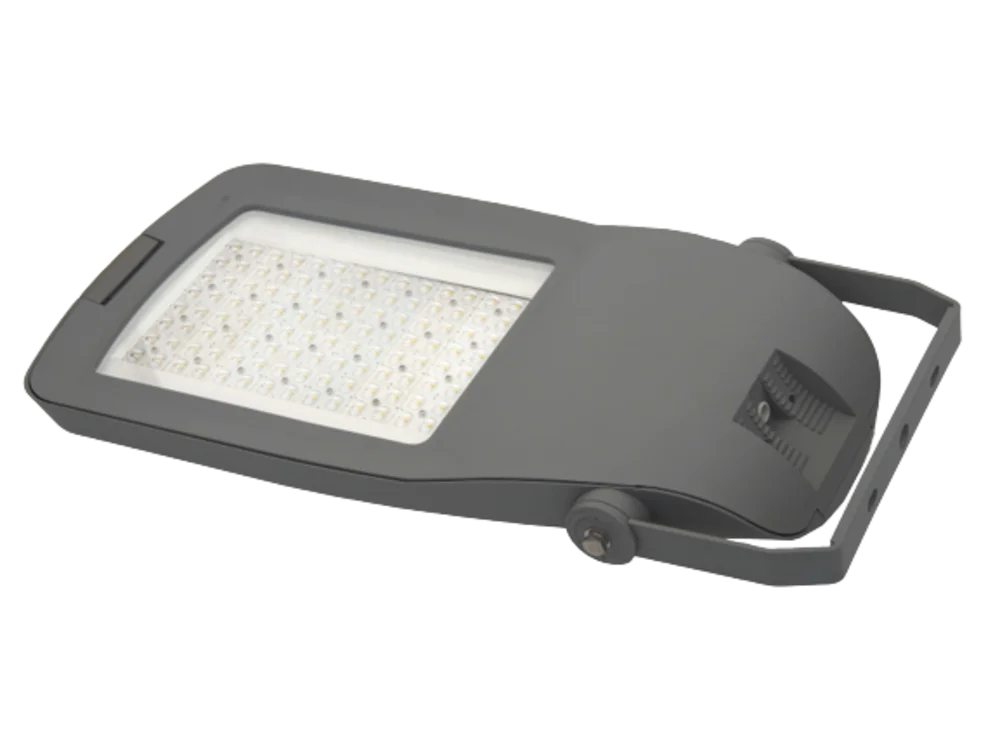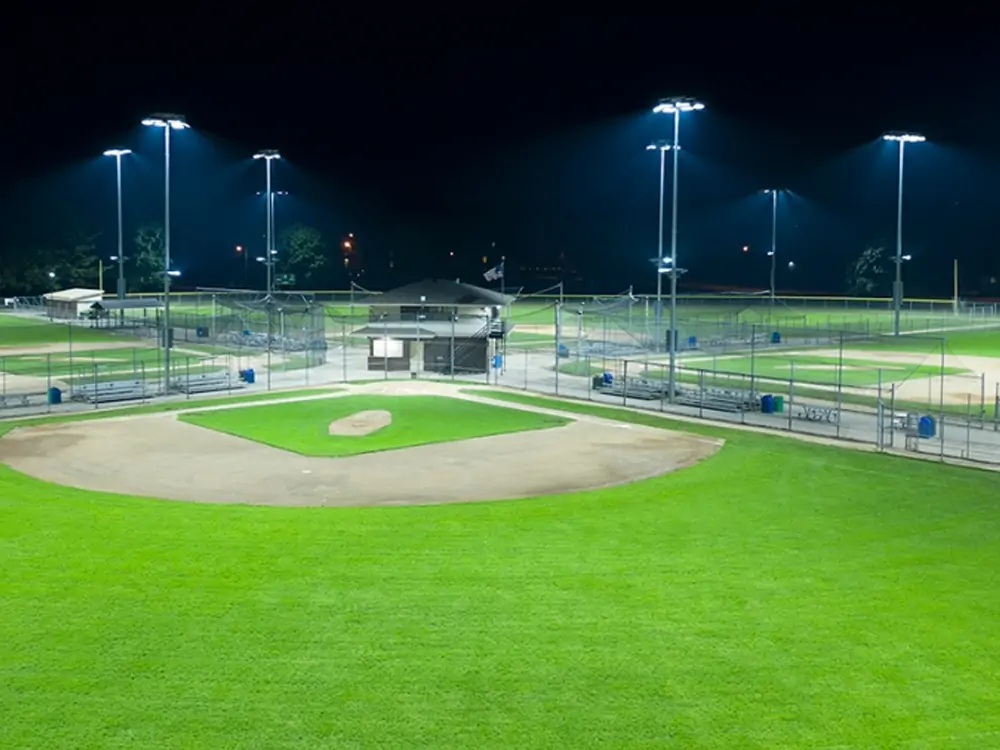In the modern world of sports and outdoor events, the role of proper lighting cannot be overstated. LED stadium lights transform how stadiums, arenas, and fields are illuminated. Designed to offer intense brightness, energy efficiency, and long-term performance, these lights are preferred by stadium owners and event managers. With various features to choose from, selecting the right stadium lights LED options can be daunting. This guide will help you understand what LED stadium lights are, the types available, their applications, benefits, and essential factors to consider when purchasing LED stadium lighting for your venue.
What is LED Stadium Lighting?

Lampu stadion LED are powerful, specialized lights for large spaces. Unlike traditional lights, LED lights use Light Emitting Diode (LED) technology. This type of lighting uses less energy while producing a brighter light. LED stadium lights are designed to cover vast areas, improving visibility for players and fans. They provide uniform lighting, reducing shadows and brightening all areas equally. These lights are durable and can withstand outdoor weather. LED stadium flood lights are popular due to their long life and low maintenance needs. Their brightness and efficiency make them ideal for large stadiums and outdoor events.
How Do LED Stadium Lights Compare with Traditional Lighting?
LED stadium lights outperform traditional lighting in many ways. They are much more energy-efficient, using up to 70% less power, which leads to significant savings on electricity bills over time. Another advantage is their lifespan, which can last up to 50,000 hours.
In contrast, traditional lights may only last 1,000 to 5,000 hours. This means fewer replacements and lower maintenance costs. LED lights also provide superior brightness. They deliver uniform lighting, which improves visibility for players and fans. This consistency reduces shadows and enhances the viewing experience during events.
Additionally, LED technology is more durable. It can withstand harsh outdoor conditions better than traditional lights. This resilience leads to fewer repairs and replacements needed.
Types of LED Stadium Lights
Choosing the right LED stadium lights depends on understanding each type. Each offers different levels of brightness, focus, and durability.
1. LED Spotlights
LED spotlights offer focused narrow-beam lighting. They differ from floodlights because they light specific areas rather than broad spaces. Spotlights are useful in stadiums that need intense light in certain zones, like goals or tracks. These bright lights can illuminate even distant spots with accuracy. LED spotlights are ideal for indoor stadiums, arenas, or focused outdoor zones. By highlighting specific areas, they improve the viewing experience for fans. Spotlights are also helpful for broadcasters, as they provide a clear view of key areas.
2. LED High Mast Lights

LED high mast lights are designed for high poles, reaching 40 feet or more. They’re built for outdoor stadiums needing both broad coverage and powerful brightness. High mast lights work well in sports fields, like football or baseball fields, where clear visibility is required across large spaces. Their tall placement allows them to illuminate a wide area with even light distribution. High-mast LED lights are also durable and made to withstand harsh weather. They’re efficient, last longer, and use less energy than older stadium lights. These lights keep running costs low, making them a smart choice for large venues.
3. LED Floodlights

Lampu sorot LED are famous for their bright, wide-angle lighting. They spread light over a broad area, making them great for outdoor sports. These lights provide even coverage, which is crucial for players and audiences. LED floodlights are energy-efficient and built to last. They are weather-resistant and work well in outdoor conditions like rain or snow. Floodlights are often arranged to reduce shadows and increase field visibility. This ensures an excellent experience for spectators and allows players to see during nighttime games.
4. RGB LED Stadium Lights
RGB LED stadium lights offer colorful, dynamic lighting. RGB stands for Red, Green, and Blue—the three colors that mix to create other shades. These lights are used for entertainment events like concerts or festivals. RGB lights can change colors and create visual effects, enhancing the event’s atmosphere. While not as bright as white LEDs, they add excitement and energy. RGB LED lights allow venues to set different moods for various events. They are ideal for special occasions and make stadiums look vibrant and engaging.
Applications of LED Stadium Lighting
LED stadium lighting has many uses in sports and entertainment. Here are some typical applications:
- LED stadium flood lights make night games possible, letting players and fans see clearly. They create even lighting across the field, improving play and safety.
- Indoor stadium LED lights are essential for sports like basketball and volleyball. They create clear, bright lighting, improving visibility for players and fans.
- Stadium lighting improves visibility and atmosphere at concerts. RGB LED lights can set the mood, making performances more immersive.
- RGB lights add ambiance to non-sporting events. This lighting style boosts audience enjoyment by making events visually exciting.
Benefits of Adding LED Stadium Lights
Switching to LED stadium lights offers many benefits. Here are the main ones:
- Long Lifespan: LED lights can last up to 50,000 hours. This long life means lower maintenance and fewer replacements, cutting costs.
- Energy Efficiency: These lights use far less energy than traditional stadium lights. They can reduce electricity costs by up to 70%, helping stadiums save money.
- Bright Illumination: LED stadium flood lights offer intense brightness. They create uniform lighting across the field, enhancing visibility and improving safety.
- Stable Performance: These are flicker-free and crucial for fast-paced sports. Flicker-free lights improve safety and viewing quality. Also, it gives players and audiences a better experience.
- Eco-Friendly: LED lights contain no harmful chemicals like mercury. Moreover, they also produce low carbon emissions, making them an environmentally friendly choice.
Factors to Consider While Buying Stadium Lights
Choosing LED stadium lights requires careful planning. Consider these factors to find lights that meet your venue’s needs.

1. Understanding Stadium Lighting Requirements
Think about your stadium’s main use. Different events have different lighting needs. Sports games may need bright lighting, while concerts could use colored lights. Understanding your requirements can help you select the most suitable stadium LED lights for your venue.
2. Lumens and Wattage
Lumens measure a light’s brightness, while wattage shows its energy use. High lumens mean bright lights, which are vital for stadiums. Look for lights with high lumens and low wattage to save on energy costs while ensuring brightness. LED stadium lighting options offer a range of lumens and wattages, so choose according to your field’s needs.
3. Color Rendering Index (CRI)
Color Rendering Index (CRI) shows how accurately lights display colors. A high CRI score (above 80) is ideal for sports venues. Accurate colors improve visibility and help players and spectators see details clearly. This is especially important in sports where color perception is essential. It is considered vital in soccer or basketball and can impact performance.
4. Color Temperature (CCT)
Color temperature, measured in Kelvin (K), affects the light’s appearance. A cool white light (around 5000K–6000K) is preferred for sports venues. Cool white lights mimic daylight, offering clear, bright lighting that enhances visibility. This helps players and fans see clearly, even in night games.
5. Beam Angles
The beam angle affects how the light spreads. A narrow beam angle suits focused lighting, like on goals or field lines. Wider beam angles provide more general lighting across larger spaces. Choosing the right beam angle for your stadium lights LED setup ensures full coverage and reduces dark spots.
6. Durability and Weather Resistance
Stadium lights, especially outdoor lights, are often exposed to harsh weather. Look for lights with high Ingress Protection (IP) ratings like IP65 or IP67. These ratings ensure that lights can resist dust and water. Durable, weather-resistant lights last longer and perform well in any condition. This saves on replacements and keeps maintenance costs low.
To Wrap-up
LED stadium lights are a smart choice for large venues. They offer excellent brightness, energy efficiency, and long life. By understanding the types of stadium LED lights, their uses, and key buying factors, you can make the best decision for your venue. Whether you need high mast lights for a large field or RGB lights for a concert, LED technology offers a flexible and cost-effective solution. Investing in LED stadium lighting can enhance visibility and reduce energy costs. It will also create a better experience for players and fans.